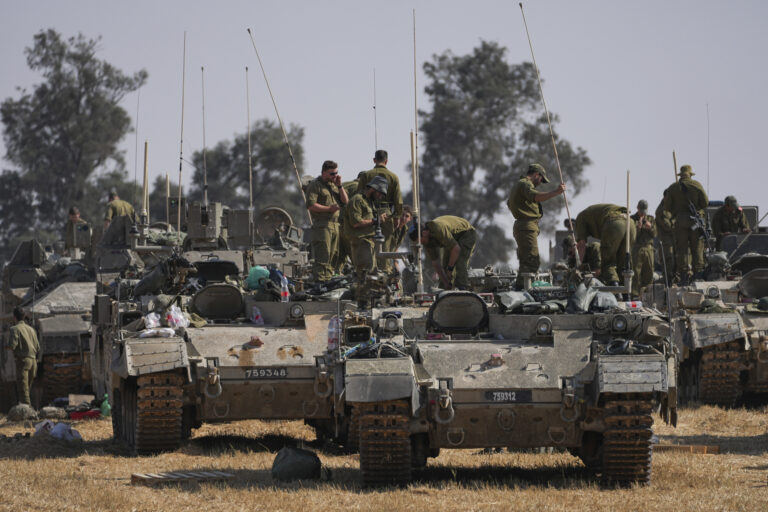 The following annual terrorism summary was released by the ISA (Israel Security Agency – Shin Bet).
The following annual terrorism summary was released by the ISA (Israel Security Agency – Shin Bet).
The number of deaths attributed to terror attacks in 2013 decreased compared to last year: 6 fatalities, as opposed to 10 in 2012 (6 of the fatalities occurred during Operation Pillar of Defense, 14-21 November 2012). This year, half of the fatalities were security personnel and another half civilians
Data on fatalities in terrorist violence
The number of deaths attributed to terror attacks in 2013 decreased compared to last year: 6 fatalities, as opposed to 10 in 2012 (6 of the fatalities occurred during Operation Pillar of Defense, 14-21 November 2012). This year, half of the fatalities were security personnel and another half civilians.
Most deaths (5) resulted from attacks which had originated in Judea and Samaria; one fatality resulted from an attack which had originated in Gaza. This year, no deaths were attributed to Sinai-based attacks.
Most fatalities resulted from attacks by local infrastructures, some attributed to “lone wolf” attackers. Approximately a third (2 fatalities) resulted from attacks by illegal aliens in Israel: the abduction and murder (20 September, Tomer Hazan) directed by imprisoned Palestinian terrorists in Israel, with the purpose to negotiate their release; the fatal stabbing attack (13 November, Eden Atias) in the city of Afula.
Distribution of fatalities according to types of attacks:
Stabbing – 3
· 30 April, Tapuach Junction /Samaria, a civilian;
· 10 October, Brosh Habika’a, a civilian;
· November 13, Afula, a soldier);
Sniping – 2
· 22 September, Hebron, a soldier;
· 24 December, Nachal Oz [from Gaza], a civilian);
Abduction – 1
· 20 September, Bat Yam-Kalkilye, a soldier).
Below is a monthly distribution of fatalities according to types of attacks
Data on casualties
2013 has shown an increased casualty toll compared to last year, if one does not include the number of casualties from Operation Pillar of Defense. In 2013, there was a casualty toll of 44, as opposed to 40 in 2012 (and 269 casualties in Operation Pillar of Defense – a total of 309 casualties in 2012).
Circa 78% of the casualties in 2013 were injured by firebomb or stone throwing (34 casualties). Circa 14% were stabbed (6 casualties), 4.5% were hit by vehicular attacks (2 casualties), 2.5% were shot at (one), and 2.5% were injured by an explosive device (one).
The 2013 distribution of civilians and security personnel casualties is such: 15 civilians and 29 security personnel.
Distribution of casualties according to types of attacks
Distribution of casualties according to areas: circa 62% (27) were injured in Judea and Samaria, about two thirds of them (18) – in Judea, and a third (9) – in Samaria. 34% of all casualties (15) were injured in the area of Jerusalem, and 4.5% (2) – within the Green Line area. This year there were no casualties from attacks which originated in Gaza and Sinai.
Victims of Palestinian terrorism since 29 September 2000
Since 29 September 2000, the total numbers of deaths and casualties were 1,227 and 8,549, respectively.
Below are annual distributions of fatalities and casualties:
Judea, Samaria and Jerusalem
In 2013, Judea and Samaria, particularly Judea saw a rise in terrorism as opposed to 2012. In 2013, Judea and Samaria had a tally of 1,271 attacks, of which 1,042 occurred in Judea (260 in “Jerusalem envelope”) and 229 in Samaria, as opposed to 578 attacks in Judea and Samaria in 2012.
The growth in the number of attacks in Judea and Samaria occurred in all forms, but was prominent with attacks consisting of firearm, IEDs, and hand grenades (including throwing of pipe IEDs and improvised hand grenades). This is translated into 201 attacks in 2013, of which 45 occurred in the “Jerusalem envelope” as opposed to 37 attacks in 2012.
Local attacks, such as firebomb throwing, showed a 60% increase: 858 attacks as opposed to 535 in 2012.
However, attacks in Jerusalem showed a decrease: 126 attacks as opposed to 187 in 2012. Most attacks in Jerusalem (122 attacks) were in the form of firebomb throwing.
2013 comparison of attacks according to types of attacks and areas
With regard to attacks which originated in Judea and Samaria, the Bat Yam bus bombing was a prominent one (22 December, a police bomb-disposal expert was lightly injured). The attack was executed by an infrastructure, consisting of Palestinian Islamic Jihad (PIJ) operatives residents of Bet Lechem; whereas the perpetrator who had placed the IED within the bus and set it off using a cell phone was an illegal alien in Israel. Several months prior to the attack he had worked at Jaffa’s Abulafia restaurant. On the morning of the attack the perpetrator infiltrated into Israel with the IED packed in a bag, through a fence breach in Eshkolot area, south Mt. Hebron. He arrived in Jaffa with the help of an Israeli citizen of Bedouin origin, who drives illegal aliens.
Other prominent attacks this year: 8 stabbing attacks, some fatal (2 fatalities: a citizen and a soldier); the kidnapping and murder (of a soldier) also by an illegal alien from Kalkilye area / Samaria; a deadly sniping attack (against a soldier) in Hebron / Judea.
Gaza
2013 saw a sharp decrease in the rate of terror attacks originating in Gaza, as opposed to 2012: 55 attacks as opposed to 1,130 in 2012 (of which 1,085 were high trajectory launchings towards Israel).
The circumstances that lead to this decrease were the Pillar of Defense ceasefire agreement in late 2012 (14-21 November) which curbed terrorism from Gaza.
Distribution of attacks originating in the Gaza Strip according to type
The decrease in the rate of attacks from Gaza is especially noticeable in high trajectory launchings (rockets and mortar shells). As such, in 2013, 63 rockets and 11 mortar shells launchings** towards Israel (in 39 attacks) were reported. As opposed to 2,327 rockets and 230 mortar shells in 2012 (of which 1,731 rockets were launched during Operation Pillar of Defense).
**Clarification: The launchings are the number of rockets / mortar shells launched. For example: One attack with a salvo of three rockets / mortar shells will be counted as one attack and three launchings.
Distribution of mortar shell and rocket launchings** from Gaza towards Israel
Rocket launchings** from Gaza in 2005-2013
Mortar shell launchings** from Gaza in 2005-2013
**Clarification: The launchings are the number of rockets / mortar shells launched. For example: One attack with a salvo of three rockets / mortar shells will be counted as one attack and three launchings
2013 also saw a decrease in non-high trajectory attacks: 16 attacks, as opposed to 52 in 2012. Below is a comparison according to types of attacks:
2012-2013 (non-high trajectory) attacks in the GS perimeter according to types
*Other – combined attack, including explosive tunnel
Strengthening and force buildup of Gaza terror groups
In 2013, Gaza terror elements, headed by Hamas and PIJ, continued efforts to strengthen and buildup their forces, particularly the production of medium to long range rockets (up to 75km).
Much effort was also put into constructing offensive tunnels that run from Gaza to Israel. Two were discovered and demolished: one near Nir Oz (January 2013), another near Ein HaShloshah (October 2013). As IDF was preparing to demolish the tunnel discovered near Ein HaShloshah, a bomb in the tunnel was set off injuring five IDF soldiers. Four Hamas operatives were killed on the Palestinian side.
Sinai
In 2013, terror elements, particularly global jihad elements, continued their aspirations to turn Sinai into a terror platform against Israel. Israeli CT activity and efforts by Egyptian government to eliminate terror infrastructures in Sinai halted this tendency, demonstrating a decrease in the number of attacks from this region.
In 2013, three attacks were executed from Sinai, as opposed to 11 in 2012. All of these attacks were rocket launchings towards Eilat (3 attacks, 5 rockets were fired: 17 April (two rockets); 4 July (two rockets); 13 August (one rocket)). No victims were reported.
Sinai attacks data below:
2012-2013 Sinai attacks
CT activity
Over 2,500 terror suspects, mostly from Judea and Samaria were arrested in 2013 as part of ISA CT activity. Following interrogations, 1,782 indictments for hostile activity were served against the suspects, and circa 800 indictments were served for riots.
Circa 190 significant attacks orchestrated to occur this year were thwarted (as opposed to 112 last year), mostly from Judea and Samaria. They included: 52 kidnapping plots, 52 shooting plots, 67 IED plots, and 16 suicide plots.
Some prominent plots: the targeting of a PIJ cell (January 2013) caught near Eyal checkpoint, east of Kfar Saba, prepared to kidnap an Israeli and transfer him to a secret house in Jenin, with the help of an Israeli of Arab origin; targeting of two military Hamas cells in the area of Hebron (March-April 2013) that planned to conduct kidnappings to bargain the release of prisoners; targeting (August 2013) of a Ramallah-based Hamas military infrastructure in advanced stages of planning a terror attack in Jerusalem during the High Holiday period.
An explosive lab containing an explosive device ready to go off and material used for the manufacturing of explosives were discovered at the house of the infrastructure’s leader – a Ramallah resident named Hamdi Hasnin Hamdi Roumana. Two residents of eastern Jerusalem, holders of Israeli IDs, were arrested. They were recruited to the cell and were supposed to transfer the IEDs to Jerusalem shopping centers which they knew due to their work there.
Moreover, a PIJ fugitive named Mohammad Rabah Asi was killed during an attempt to arrest him (October 2013). Asi was the one who orchestrated and sent the perpetrators of the Tel Aviv bus attack (21 November 2012, 26 casualties) during Operation Pillar of Defense and was involved in furthering additional attacks in Israel.
Other 2013 prominent attacks include the exposure and targeting of circa 40 various attack intentions in Judea and Samaria which were directed by elements in Gaza involving prisoners released in the Shalit deal; the arrest (January 2013) of two brothers citizens of Israel from the Abu Qwaider Bedouin settlement in Israel’s Negev, who admitted to producing IEDs and planning to execute various kinds of attacks.
As for activity of global jihad-affiliated salafi-jihadist elements, note the killing (November 2013) of three operatives of a military infrastructure which worked in the area of Hebron and planned to conduct attacks against Israel and the PA (their vehicle contained 2 guns and several IEDs). Also, note the killing (April 2013) of a resident of Gaza’s Shati refugee camp Haitham Zyad Meskhal, an explosives expert involved in weapons production, upgrade, and traffic and a key terror expert in this field. Meskhal facilitated the global jihad group Mujahidin Shura Council in the Environs of Jerusalem (Aknaf Beit Al Maqdas) which has targeted Israel in recent years. He also helped carry out rocket attacks with Aknaf Beit Al Maqdas infrastructure against the city of Eilat (17 April 2013) and promoted other attacks.
Israeli Arabs
The involvement in terrorism of Israelis of Arab origin continued to be minor this year. However, several Israeli Arabs had left for Syria to fight with the rebels against the Assad regime.
This phenomenon poses a security risk to Israel, as the individuals who travel to Syria go through military training and make contacts with hostile elements to Israel who work with the rebel groups, including global jihad elements. Those who travel to Syria are exposed to radical jihadist ideology and could be used to provide information on targets in Israel, or even carry out terrorism against Israel.
Another prominent event was the arrest (October 2013) of Hosam Nidal Yousef Higla from Jaljulia, who went through theoretical and practical training in Syria and even engaged in the fighting. Before returning to Israel, he was requested to join the “resistance” and carry out offensive actions and unarmed hostile actions against Israel such as arson, poisoning water sources, and writing statements (indictment was served in November 2013).
An emphasis is placed on the potential risk from illegal aliens in terrorism (2013 – three attacks, some fatal, carried out by illegal aliens) and their occasional use of Israeli drivers of Arab origin, as was the case in the Bat Yam IED attack (December 2013), when the perpetrator who placed and activated the device, reached Israel with the help of an Israeli Bedouin working as a driver.
The radical left- and right- wings
The radical right wing – ISA data shows a rise in the number of attacks by radical right activists against Arabs: 25 attacks as opposed to 18 in 2012. Yet, data shows a decline in the number of casualties from such activity: 4 casualties in 2013 as opposed to 6 in 2012, with no fatalities reported.
Stabbing attacks were also noticeable in 2013, with 3 attacks reported: an Arab was stabbed in April in Jerusalem’s Meah Shearim neighborhood; taxi drivers were stabbed in May and June in Jerusalem’s Gilo neighborhood; as opposed to no stabbing attacks in 2012.
There were 4 arson attacks involving firebombs that torched property, with no victims: 2 attacks in June 2013, a firebomb set fire to a house in Burin and a container in Asira Al Kabalia was torched; and 2 attacks in November: a dwelling house in Sinjel was torched and a firebomb set fire to a house in Burin.
There was a decrease in damage to religious property in 2013 with one attack (on Beit Jimal Monastery, Arson, August 2013), as opposed to 3 in 2012.
Other types of attacks were 16 vehicle arsons (as opposed to 12 in 2012); stone throwing which seriously injured an Arab in Mt. Zion / Jerusalem (November 2013).
Prominent areas of activity: Jerusalem (7 attacks), Binyamin (8), Shomron (5). Attacks also occurred in the Green Line (3) and in Yehuda (2).
With regard to CT activity, ISA with the help of Israeli Police and IDF, had arrested for interrogation dozens of operatives, mostly based on ISA intelligence. 70 indictments were served throughout 2013 (as opposed to 46 in 2012), and 13 administrative restraining orders were issued (by the Commander of IDF Central Command and based on ISA information) against radical right wing operatives.
Radical left – there has been a decrease in the level of anarchist activity in Judea and Samaria’s conflict areas. One of the reasons for this was the dissolving of pro-Palestinian International Solidarity Movement (ISM).
Security
2013 saw no attacks against Jewish and Israeli targets around the world despite a series of terror attacks and attack attempts in 2012 (Burgos / Bulgaria; New Delhi / India; Tbilisi / Georgia).
Iran and its proxies continued to aspire and attack Israeli targets abroad. Continued attempts to establish operational infrastructures abroad are a proof of that.
Another potential threat comes from global jihad elements, including Muslim converts from European countries who come to Syria to join the opposition to fight the regime. The military training and jihadist ideology they absorb in Syria increases the threat level from these elements due to their feasible terror recruitment which is meant to target Jewish / Israeli interests in their homelands and globally
(YWN – Israel Desk, Jerusalem)










